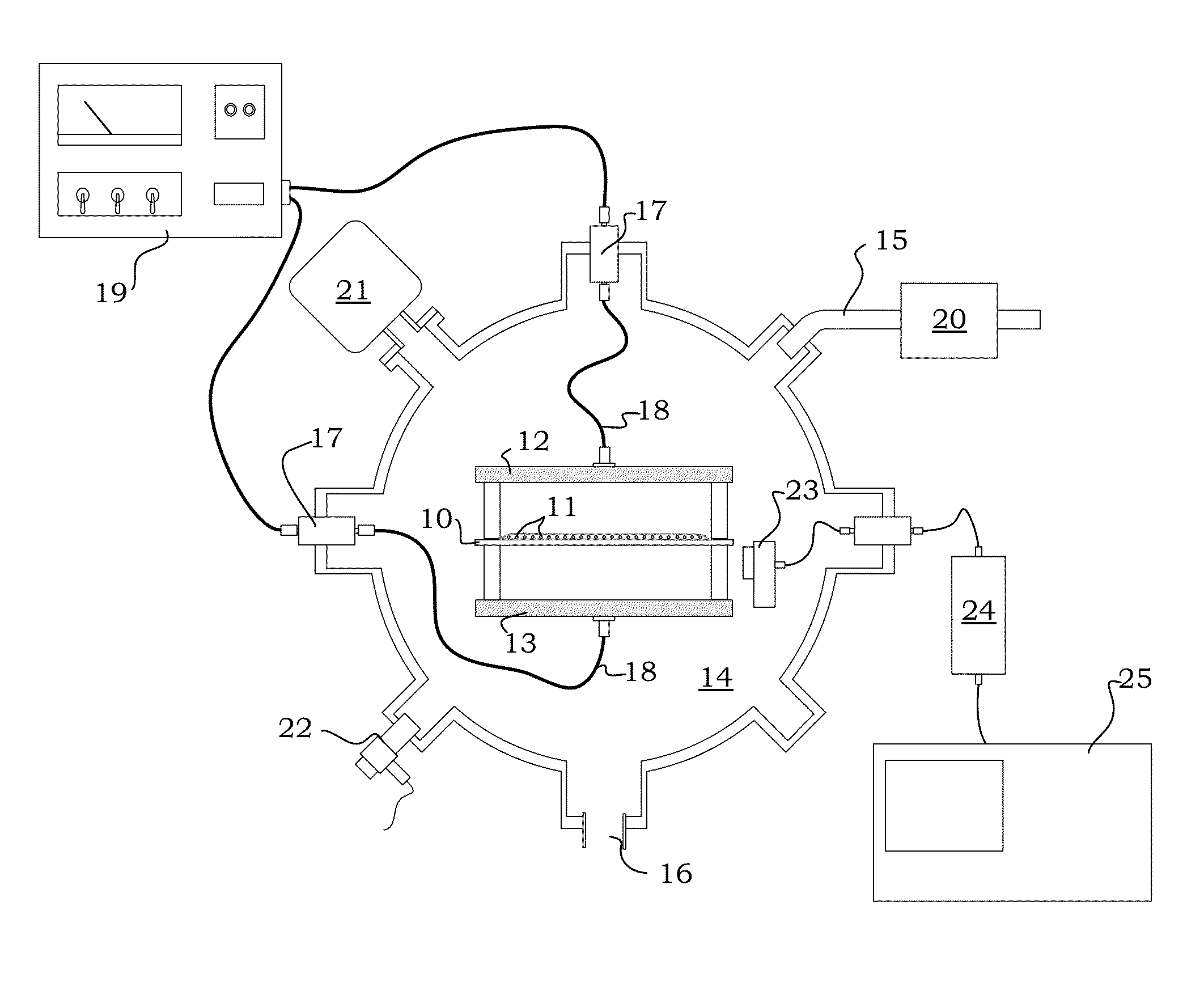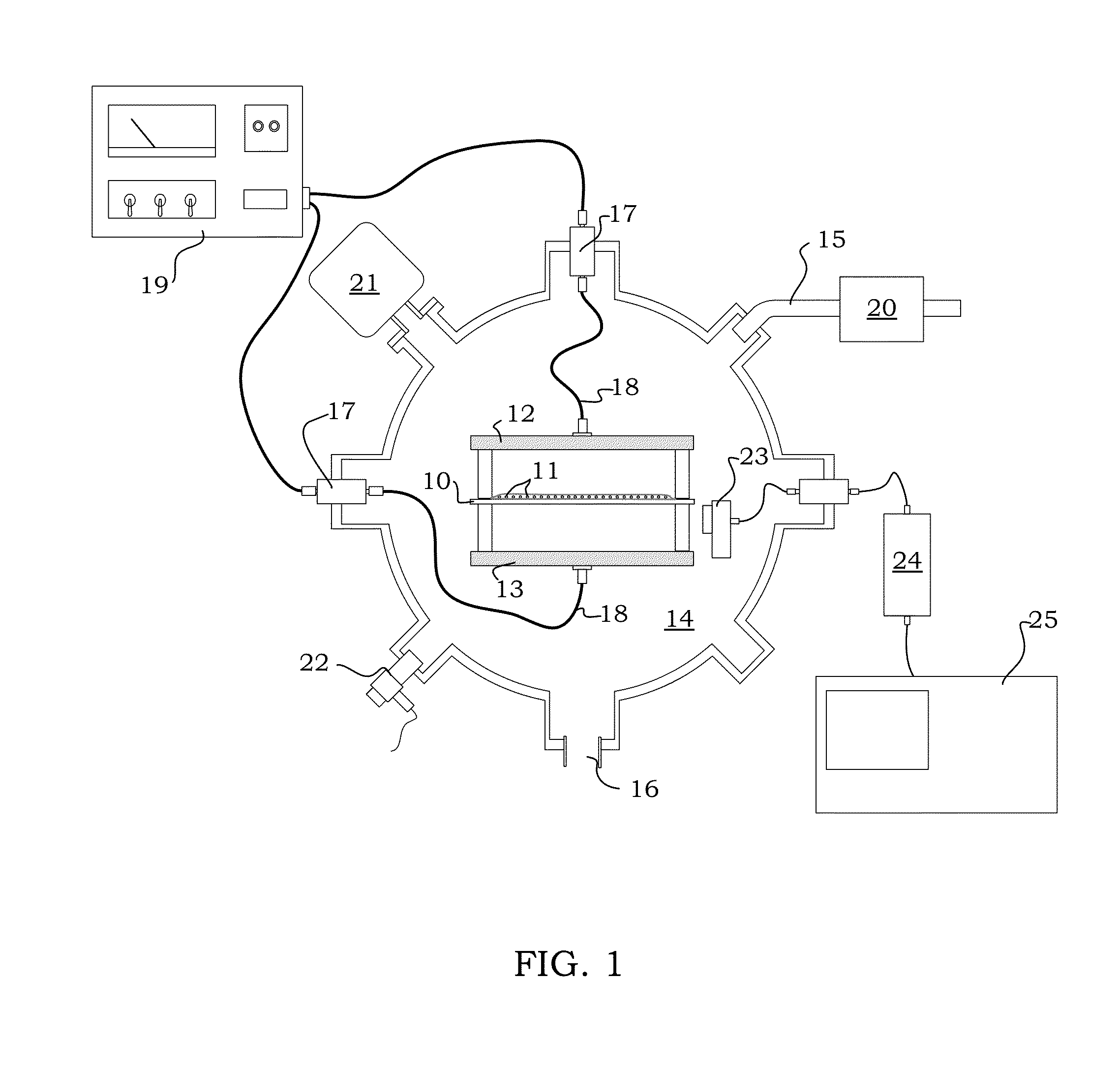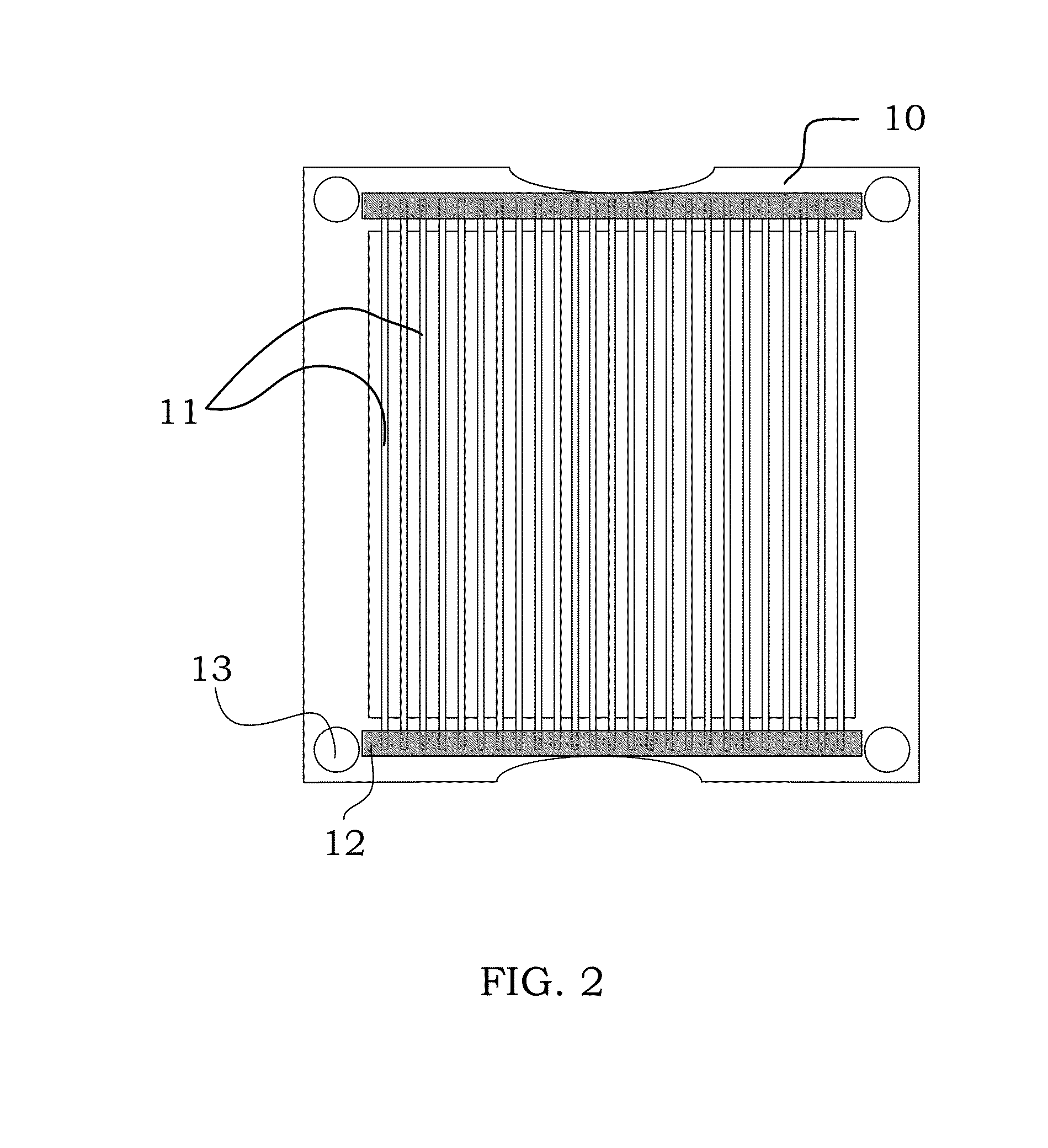Membrane Selective for Alcohols
- Summary
- Abstract
- Description
- Claims
- Application Information
AI Technical Summary
Benefits of technology
Problems solved by technology
Method used
Image
Examples
example 1
[0040]Polymethylpentene hollow fibers of the same source and composition as in Comparative Example 1 were treated with an oxidizing gas plasma under a varied set of conditions wherein blends of air with methane were subjected to an radiofrequency generated glow discharge and the hollow fiber membrane substrates were treated with these gas plasmas. Gas plasma excitation was by radiofrequency signal excitation at a power level of 50 watts and exposure time was 5 minutes. The ratio of methane to air in plasma blends was varied from 100% methane to 100% air. Specific blends that were used included 100 / 0, 75 / 25, 50 / 50, 25 / 75, 12.5 / 87.5, and 0 / 100 molar % methane / air respectively. The treated hollow fibers of polymethylpentene were potted into small modules as was described above, then tested for gas, alcohol, and water permeabilities. Table 2 contains gas permeation characteristics of the resulting membranes toward nitrogen, oxygen, carbon dioxide and methane. Results showed that, at gas...
example 2
[0042]A second set of membrane substrates of the same type as in Example 1 were treated in the same manner using the same variation in methane-air blends for glow discharge plasma generation. Results are shown in Tables 4 and 5. Nitrogen gas permeabilities are shown in a graph in FIG. 6. These data points show enough variation from the membrane set of Example 1 to indicate the variability one might encounter in preparing multiple samples and running comparative permeation measurements on ostensibly duplicate samples. However, the effect of oxidizing gas plasma treatment at the high air-to-methane ratios is again highly evident, with the major change in permeabilities occurring above blend ratios greater than 75% air. As previously seen, the permeability of the four permanent gases eventually switched over to essentially porous flow, with selectivity being generally governed by molecular size as opposed to solubility and affinity toward a wall matrix polymer. This was again particula...
PUM
| Property | Measurement | Unit |
|---|---|---|
| Thickness | aaaaa | aaaaa |
| Substance count | aaaaa | aaaaa |
| Substance count | aaaaa | aaaaa |
Abstract
Description
Claims
Application Information
 Login to View More
Login to View More - R&D
- Intellectual Property
- Life Sciences
- Materials
- Tech Scout
- Unparalleled Data Quality
- Higher Quality Content
- 60% Fewer Hallucinations
Browse by: Latest US Patents, China's latest patents, Technical Efficacy Thesaurus, Application Domain, Technology Topic, Popular Technical Reports.
© 2025 PatSnap. All rights reserved.Legal|Privacy policy|Modern Slavery Act Transparency Statement|Sitemap|About US| Contact US: help@patsnap.com



